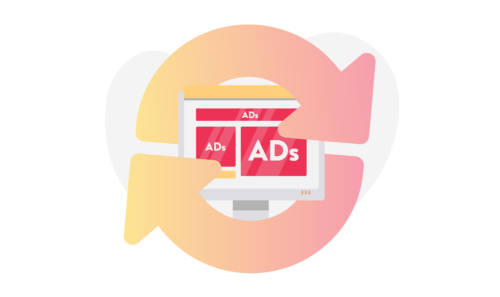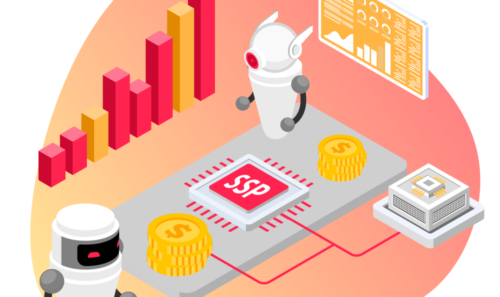PrebidGenius: Artificial Intelligence for Revenue Optimisation in Header Bidding
Nearly 200% – This is the Header Bidding revenue boost, achieved by PrebidGenius for 1 domain, which resulted in a 30% uplift in the whole of the Programmatic revenue of this Publisher.

How? With a smart configuration of the Header Bidding based on state-of-the-art Artificial Intelligence algorithms.
In the last few years, Header Bidding has revolutionised the Programmatic industry. The majority of Publishers have chosen to implement Header Bidding, and have seen their revenues rise. However, Header Bidding configuration depends on many variables which involve an understanding of dozens of metrics and dimensions and even if a Publisher manages to find the optimisation sweet spot, it is very hard to maintain over the long term, in what is the dynamic environment of Programmatic advertising.
Artificial Intelligence can support your Header Bidding configuration in a way which would hardly be possible when done manually. Before we explain how AI works, let’s consider the challenges that Header Bidding poses.
Why is it difficult to optimise Header Bidding revenues?
A constant need to balance revenue unblockers & revenue boosters with user experience!

Revenue blockers are those problems arising from the current setup that lead to a significant drop in revenue. For example, a mistake in the configuration of an ad-unit or a bidder. This is generally where the focus goes first, because revenue blockers generally have the biggest impact.
Revenue boosters are the optimisation of all variables such as timeout, bidder selection or the balance browser vs. server side of the auction that increase revenues. This optimization is both complex and time consuming to achieve.
Finally…
User experience is the user’s level of comfort when reading your domain and can be measured by the page latency or the ad clutter.
These three elements are interconnected; and in the end, the game is to maximise revenues while holding onto optimal user experience requirements. But with plenty of variables, in a dynamic environment achieving this optimal constant is far from easy…
Many variables

Publishers can play with many variables in order to positively impact their Header Bidding setups. Since Header Bidding is all about putting into competition various bidders, it is no surprise that bidder selection plays a crucial role in Header Bidding performance. Yet, such a selection depends on the GEO for the traffic of the domain and its consequences for various GEOs (e.g. 60% USA, 20% UK and 20% others), the ad-unit type (e.g. display vs. video) or the device share mobile/desktop. And it is irregular over time: the SSP’s interest to bid will vary upon their pool of advertisers and their active campaigns, which are dynamic variables.
Header Bidding performance may also be impacted by other variables, such as: timeouts, refresh, and the setup between browser (client side) vs. server side for the auction. Not to mention, the ad itself (its location, format) or the other part of the Programmatic setup; including, for example, floor prices. These are all factors that need to be looked at.
Challenges to conducting many A/B tests and multivariate testing
The best way of understanding how variables may impact your revenues or user experience is to either conduct A/B tests (test with 1 single variable, e.g. separate the traffic with part A using timeout 1000 ms and B using 2000 ms) or carry out multivariate tests (tests with more segmentation e.g. timeout 500/1000/2000/3000 or using several variables, e.g. timeout & refresh in different segmentations).
But these are also time consuming; and you need to conduct dozens of them on a weekly basis, and repeat them over time (because the whole of the Programmatic environment is very dynamic (policies change from time to time, the demand for a bidder changes (upon their advertisers campaigns), the Publisher’s domain can be updated, the context for users changes…).
Many metrics and dimensions

Once you have set your tests, you will still need to measure results. And playing with dozens of metrics (bids, wins, timeouts, average CPMs…) and dimensions (e.g. Geo, fill rate, formats, device…) is not always obvious with variables inter-correlation and also with possible unpredicted impacts. Not to mention the fact that some impacts can appear several days later; or even weeks after your configuration change. In the end, it can be hard to manually identify potential positive triggers, and it is even harder to adjust them optimally.
Each ad-unit should be treated individually
Whether your ad-unit is in the header or footer, if it is a display or video, upon its format, and many other dimensions, the Header Bidding configuration will be very different. You may favour high timeouts for some, while reducing it for others; you may deactivate for some the refresh, and the bidder selection itself may differ (e.g. some bidders may only target high viewability ads). And if you have dozens or hundreds of ad-units to manage, then it becomes impossible to optimise Header Bidding manually on an ad-unit level.
Presenting PrebidGenius, the simplest way to maximise your header bidding revenues
PrebidGenius is an algorithm implemented in the QuickWrap wrapper that will boost your Header Bidding revenues thanks to its automatic performance optimization, powered as it is with state-of-the-art Artificial Intelligence.
Benefits

In tests conducted with the Yieldbird internal wrapper, for Publishers with an advanced Programmatic setup, using in particular ADX, Open Bidding and Header Bidding, PrebidGenius has achieved revenue uplift from 16% up to nearly 200% for Header Bidding only, and uplifts up to 30% for the entire Programmatic.
PrebidGenius has also achieved viewability increase by up to 90%, and a fill rate increase by up to 100% WITHOUT loss of eCPM.
And all of the above still allows the Publisher to control their domain user experience. For example, the Publisher can de-activate refresh if they wish, or limit the timeout. PrebidGenius will adapt and automate the configuration with these input requirements.
How does it work?
PrebidGenius does 2 things:
1. It constantly monitors your setup and looks for all types of revenue blockers, allowing automated or manual revenue unblocking.
2. It correlates your setup with revenues, constantly tests new configurations, and triggers variables in a smart way, allowing revenue boosting.
As an example of revenue unblocking, PrebidGenius may look at drops in revenue, RPM, ad request, CTR, fill rates and other metrics, with most of these being interconnected: as an example, a drop in viewability, CTR or fill rate; all may impact the RPM. PrebidGenius then identifies what may be the root(s) of the issue. For example, for the ad request drop, it may have been caused by a deactivation of refresh, a change of the site layout, or a modification of the bidders. Upon the root(s) having been identified and the user configuration, PrebidGenius will either correct automatically the issue or send an alert notification to the user, with both a description of the issue and a mitigation solution proposal.
The revenue booster is more advanced. PrebidGenius facilitates constant multivariate testing with different variable configurations, such as the selection of Bidders (plugs or unplugs a bidder for an ad-unit), the bidder connection, on the client or server side, timeouts, and refresh. Upon measured results, PrebidGenius then triggers these variables (or suggests modifications) in the optimal way. And it constantly repeats the process in a loop (it automates a process we call Lean Optimisation for Header Bidding).

Why is Artificial intelligence the future for the optimisation of your Header Bidding?
Unavoidable
AI in Programmatic is the future (to learn more, read How Artificial Intelligence Powers Digital Ad Sales). With immense levels of accessible data volumes, Programmatic has an excellent foundation for Artificial Intelligence since AI learns to predict a given set of attributes based on a given data set (training set). AI therefore perfectly suits the goal of building Header Bidding revenue uplift by way of optimal configuration.
Buyers use AI to optimise their bids. A notable example is as follows: if your floor prices are too low (set in your ad-server), buyers will understand that they can win with lower prices, and they will reduce their bids accordingly. This process is known as bid-shading. To look at AI from the buyer side, which goal is to buy the cheapest possible ad impressions, Publishers should also optimise their configuration with AI. PrebidGenius is capable of predicting how bidders may bid and adapt optimally in order to maximise revenues.
Although Header Bidding usage has become largely democratic, it continues to evolve and change at a very fast pace; both technologically, with new applications (e.g. “Header Bidding in-app” or for connected TV), and with respect to new regulations and policies (e.g. the new UPR in 2019 and Chrome new cookie policy in 2022).
For all the above reasons, it is just a matter of time before all Header Bidding is guided by AI.
Should you develop your own AI algorithm?

To develop such an algorithm you will need:
– A large volume of data and enough inventory to test,
– Time, typically min. 1 year,
– A set of skills covered by data scientists, developers, analytics experts and Adops,
– An R&D budget.
Yieldbird won an EU R&D competition with the project “Development and implementation of real-time advertising sales management system for digital Publishers.” The project was launched in Oct. 2019 and has accumulated a total value of nearly M$ 1.7 (7 481 784 zł). We have therefore put a tremendous effort into developing PrebidGenius, which is an Artificial Intelligence R&D project, one with direct applications for Publishers.
Yieldbird’s assembled a unique pool of expertise, which can draw on Yieldbird’s unmatched experience in the Programmatic industry.
With over 10 billion ads served per month (of all formats & types), with traffic all over the world, over 30 bidder connections and an internal wrapper used as a sandbox for testing new technologies, Yieldbird has put in place stellar foundations for PrebidGenius; and we are constantly testing new configurations and improving our algorithms.
Join the Beta program for PrebidGenius
Leverage the full potential of your website and maximise its revenues with Header Bidding!
PrebidGenius is opening in the Beta Phase. It is a part of QuickWrap, a state of the art wrapper developed by Yieldbird over the course of 10 years, and honed from the serving of billions of ads every month in Header Bidding, for Publishers from all over the world.
Yieldbird will select the first 10 Publishers to register for the program.
To learn more or become a Beta tester, click below.







